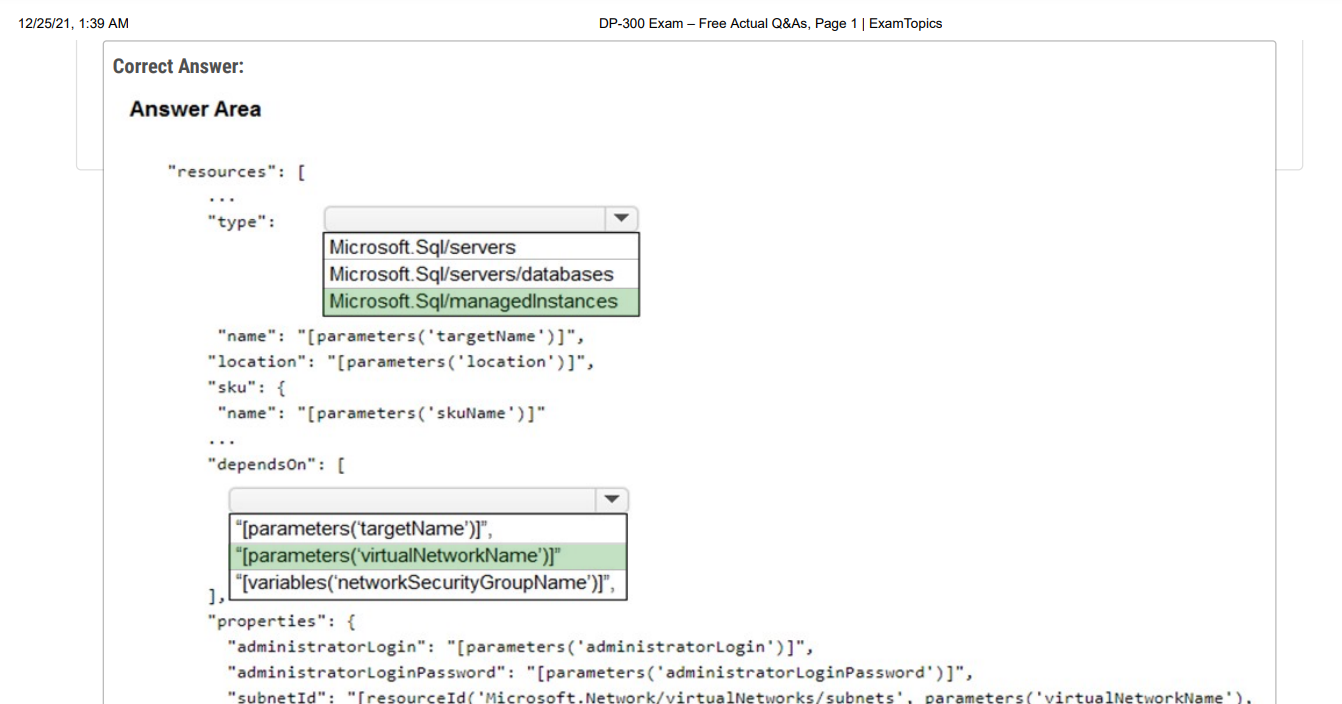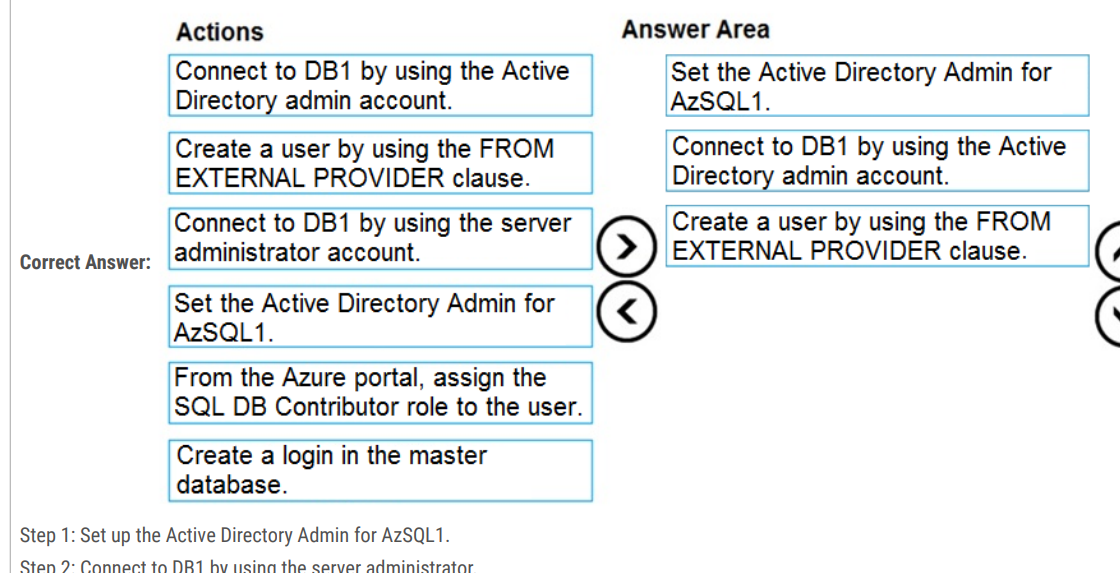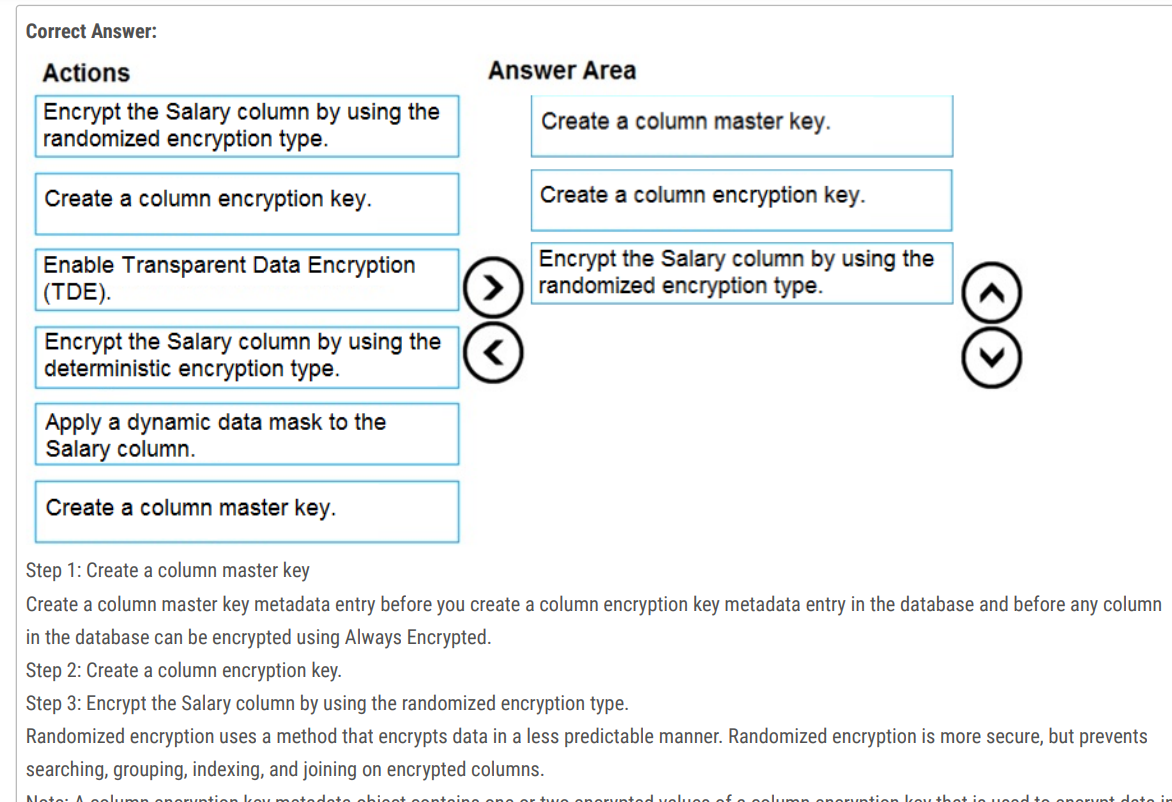DP-300(30-60 questions)
What should you create on VNet1?
A. a VPN gateway
B. a service endpoint
C. a private link
D. an ExpressRoute gateway
Correct Answer: C
You have 40 Azure SQL databases, each for a different customer. All the databases reside on the same Azure SQL Database server. You need to ensure that each customer can only connect to and access their respective database. Which two actions should you perform? Each correct answer presents part of the solution.
NOTE: Each correct selection is worth one point. A. Implement row-level security (RLS). B. Create users in each database. C. Configure the database firewall. D. Configure the server firewall. E. Create logins in the master database. F. Implement Always Encrypted.
Correct Answer: BC
You have an Azure virtual machine named VM1 on a virtual network named VNet1. Outbound traffic from VM1 to the internet is blocked. You have an Azure SQL database named SqlDb1 on a logical server named SqlSrv1. You need to implement connectivity between VM1 and SqlDb1 to meet the following requirements: ✑ Ensure that VM1 cannot connect to any Azure SQL Server other than SqlSrv1. ✑ Restrict network connectivity to SqlSrv1. What should you create on VNet1?
A. a VPN gateway B. a service endpoint C. a private link D. an ExpressRoute gateway
Correct Answer: C
You are developing an application that uses Azure Data Lake Storage Gen 2. You need to recommend a solution to grant permissions to a specific application for a limited time period. What should you include in the recommendation? A. role assignments B. account keys C. shared access signatures (SAS) D. Azure Active Directory (Azure AD) identities Correct Answer: C A shared access signature (SAS) provides secure delegated access to resources in your storage account. With a SAS, you have granular control over how a client can access your data. For example: What resources the client may access. What permissions they have to those resources. How long the SAS is valid. Note: Data Lake Storage Gen2 supports the following authorization mechanisms: ✑ Shared Key authorization ✑ Shared access signature (SAS) authorization ✑ Role-based access control (Azure RBAC) Access control lists (ACL) Data Lake Storage Gen2 supports the following authorization mechanisms: ✑ Shared Key authorization ✑ Shared access signature (SAS) authorization ✑ Role-based access control (Azure RBAC) ✑ Access control lists (ACL)
Reference: https://docs.microsoft.com/en-us/azure/storage/common/storage-sas-overview
Question #12 Topic 2 You are designing an enterprise data warehouse in Azure Synapse Analytics that will contain a table named Customers. Customers will contain credit card information. You need to recommend a solution to provide salespeople with the ability to view all the entries in Customers. The solution must prevent all the salespeople from viewing or inferring the credit card information. What should you include in the recommendation? A. row-level security B. data masking C. Always Encrypted D. column-level security
Correct Answer: B Azure SQL Database, Azure SQL Managed Instance, and Azure Synapse Analytics support dynamic data masking. Dynamic data masking limits sensitive data exposure by masking it to non-privileged users. The Credit card masking method exposes the last four digits of the designated fields and adds a constant string as a prefix in the form of a credit card. Example: XXXX-XXXX-XXXX-1234









Hey! please share the pdf if possible. My email id is venkatajwala16@gmail.com
ReplyDelete